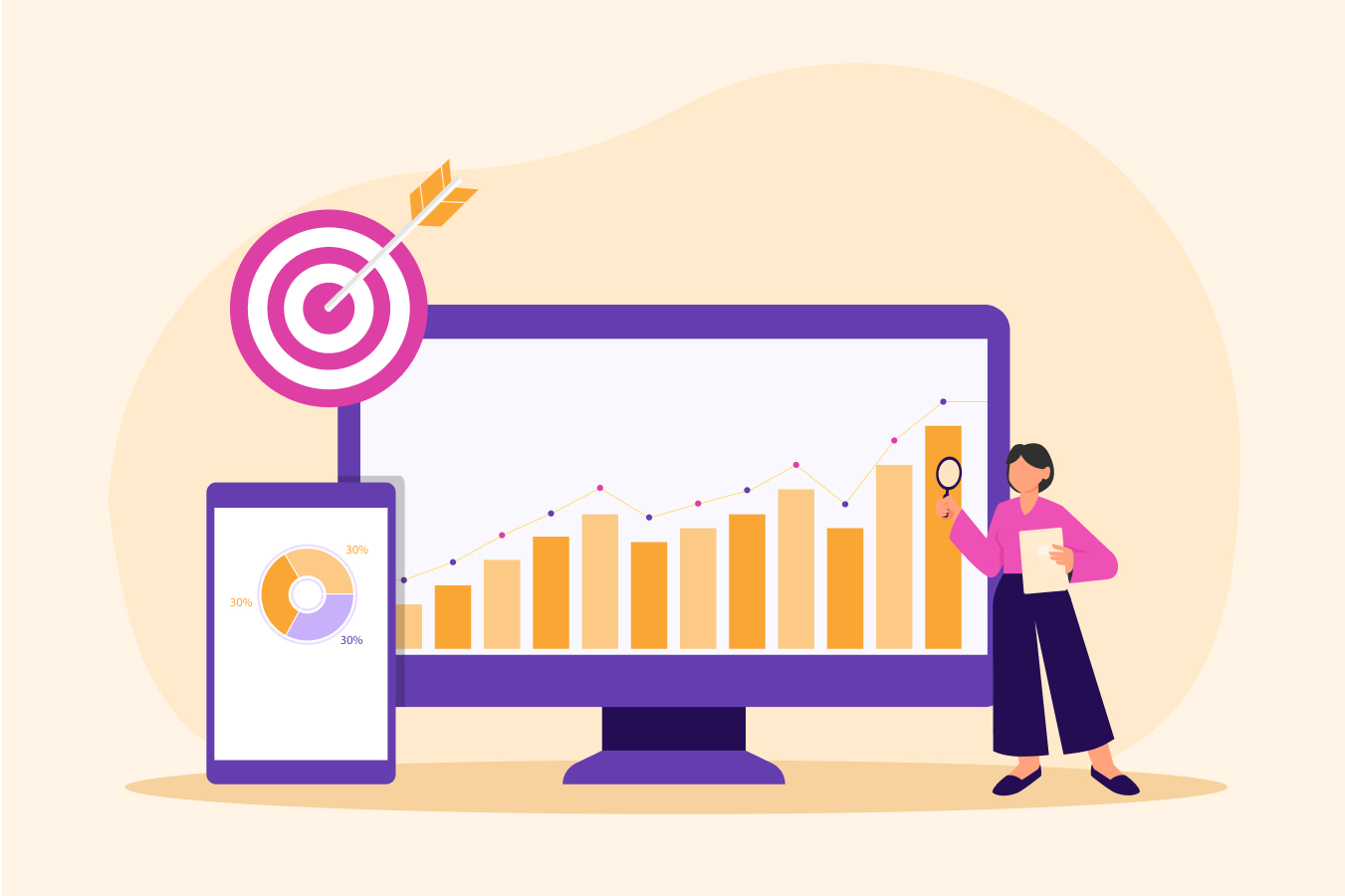Power BI Roadmap: A Comprehensive Journey
In today’s data-driven world, extracting data-based insights and making informed decisions are crucial for business success. Business intelligence tools like Power BI empower users to analyze data, create interactive visualizations like dashboards and charts, and share insights. Moreover, the growing demand for expertise in Power BI has led to companies offering various job profiles. Mastering the Power BI tool can pave the way to numerous career opportunities.
This Power BI roadmap offers a fundamental understanding of the tool. The guide covers everything from the basics to advanced concepts, ensuring you possess all the required Power BI knowledge.
Power BI Roadmap
A roadmap is beneficial when you are acquiring a new skill. It provides a framework that outlines what needs to be learned methodically. The Power BI roadmap helps you create a framework for your learning journey and makes the process easier.
1. Cover Business Intelligence Basics
Begin your Power BI roadmap journey with an understanding of the basics of business intelligence. Power BI makes business intelligence processes seamless and efficient. Therefore, to understand the workings of Power BI, acquire a robust grasp of the fundamentals of business intelligence.
To begin with, you can explore the following concepts:
- Introduction to Business Intelligence (BI): BI uses technology to analyze business data and make data-driven decisions. It helps organizations gain insights, optimize processes, and drive growth. Understanding BI fundamentals lays the groundwork for effective data utilization.
- Importance of BI in Data-Driven Decision-Making: BI enables organizations to transform raw data into actionable insights, leading to better decision-making and increased efficiency. Appreciating its significance motivates learners to delve deeper into BI tools like Power BI.
- Overview of Common BI Tools and Technologies: Various BI tools, including Power BI, Tableau, and QlikView, offer unique features and functionalities. Familiarizing yourself with these tools broadens one’s perspective on BI applications and enhances tool selection skills.
You can take the following courses to learn the tools and increase your chances of success in the business intelligence field:
2. Get Started with Power Bi
For the next step in the Power BI roadmap, familiarize yourself with the interface of Power BI. Explore the Power BI architecture, study it, and gain insights into the functioning of Power BI.
Here is what you can explore by navigating the Power BI tool.
a. Understanding the Power BI Ecosystem
The Power BI ecosystem includes some important Power BI components:
- Power BI Desktop: A desktop application for data preparation, modeling, and report creation.
- Power BI Service: A cloud-based service for publishing, sharing, and collaborating on Power BI reports and dashboards.
- Power BI Mobile: Mobile applications that allow users to view and interact with Power BI reports and dashboards on smartphones and tablets.
b. Master Various Data Sources
Power BI allows users to connect to data sources, including Excel, databases, cloud services, and web sources, enabling seamless data integration. Mastery over data connectivity facilitates comprehensive data analysis.
c. Navigating the Power BI Interface
Familiarizing yourself with the Power BI interface is essential for efficient navigation and understanding of its components, such as reports, dashboards, and datasets. Proficiency in interface navigation expedites report creation and analysis.
You can enroll in an Excel course to learn the fundamentals of Excel, data visualization, and analysis to tackle analytical and decision-making tasks.
3. Understand Data Operations and Visualization
Data operation involves the process of manipulating, transforming, and preparing data for analysis and visualization. On the other hand, data visualization is the process of representing data visually through charts, graphs, tables, and other visual elements.
These two processes are essential in cleaning the data and organizing it in a manner that facilitates interpretation and analysis. Understanding how Power BI supports these processes is crucial. You can do so by understanding the following concepts in the Power BI roadmap:
a. Importing and Shaping Data Using Power Query
Power Query is a data connectivity and preparation tool for importing, transforming, and cleaning data from various sources. It ensures data consistency and quality. By gaining proficiency in data shaping techniques, you can learn to enhance data preparation accuracy.
b. Creating Basic Visualizations
Power BI offers a variety of visualization options, including charts, graphs, and tables, to present data in a visually appealing and understandable format. Master the basic visualization techniques that lay the foundation for advanced data interpretation.
c. Customizing and Formatting Visualizations
You should also learn to customize the appearance of visualizations by adjusting colors, fonts, and labels to enhance readability and aesthetics. Attention to visualization customization enhances report aesthetics and user engagement.
d. Arranging Visualizations into Reports and Dashboards
Organizing visualizations into reports and dashboards allows users to convey insights effectively and facilitate data-driven decision-making. Gain proficiency in creating reports and Power BI dashboards. It helps enhance communication and collaboration within organizations with the help of easily comprehensible dashboards showcasing business data.
You can read our blog on the difference between reports and dashboards to understand which option can create easy-to-understand business insights.
4. Learn Data Transformation and Modeling
Learn the data transformation techniques and tools. Data transformation is about refining raw data. It involves cleaning, shaping, and preparing the data to ensure its accuracy and relevance for analysis.
On the other hand, data modeling in Power BI is the subsequent step where data is organized into tables, relationships are defined, and calculated measures are created. This organization facilitates efficient data analysis and visualization, enabling users to extract meaningful insights from the data.
Ensure to study and learn the following concepts:
- Data Transformation Techniques: Users can perform data transformation operations such as cleaning, filtering, and merging to prepare data for analysis and visualization. Mastery of data transformation techniques ensures data accuracy and relevance in analysis.
- Creating Calculated Columns and Measures Using DAX: DAX (Data Analysis Expressions) is a powerful formula language used in Power BI to create calculated columns, measures, and calculated tables for advanced analytics. Proficiency in DAX empowers users to perform complex calculations and analysis.
- Designing Data Models: Building data models involves defining relationships between tables, creating hierarchies, and optimizing data structures for efficient analysis and visualization. Mastery over data modeling ensures data integrity and consistency in analysis.
- Optimizing Data Models for Performance: Optimizing data models ensures fast query performance and responsiveness, enhancing the overall user experience. Attention to model optimization improves report interactivity and user satisfaction.
5. Gain Proficiency in Advanced-Level Power BI Concepts
The next step in our Power BI roadmap is to master advanced-level concepts. It will allow you to utilize Power BI to its fullest potential and ultimately assist in drawing useful insights effectively.
Here are a few concepts that are recommended to be covered at this stage.
- Implementing Advanced Data Visualization Techniques: Power BI offers advanced visualization options, such as maps, treemaps, and gauges, to uncover deeper insights and trends in data. Mastery of advanced visualizations enhances data storytelling and decision support capabilities.
- Leveraging Power BI’s Analytical Capabilities: Advanced analytical features like forecasting and clustering enable users to identify patterns, trends, and outliers in data for predictive analysis. Proficiency in advanced analytics enhances predictive modeling and scenario analysis capabilities.
- Automating Report Generation and Distribution: Power BI allows for automatic report creation and delivery, enabling timely access to data insights. Mastering report automation boosts operational efficiency and decision-making abilities.
- Implementing Security and Governance Measures: Implementing security measures ensures data privacy and regulatory compliance. Attention to security and governance fosters data trust and integrity within organizations.
6. Work on Projects to Hone Your Skills
The last step in the Power BI roadmap is to put your skills into practice. Working on real-world Power BI projects is crucial for honing skills and showcasing expertise. Practical projects provide an opportunity to apply theoretical knowledge, deepen understanding, and foster hands-on learning.
Here are a few project ideas with a brief explanation of each:
- Customer Churn Analysis: This project analyzes customer data to identify trends and factors leading to customer attrition. Businesses can use Power BI dashboards to predict churn rates and create strategies to enhance customer retention.
- Product Sales Analysis: This project examines sales data to identify profit margins, revenue trends, and product performance. With Power BI, you can create reports that showcase top-selling products, seasonal trends, and areas needing improvement.
- Healthcare Sales Analysis: This project helps track sales performance in the healthcare sector. Businesses can identify market trends and optimize their sales strategies by visualizing sales across different regions or product categories.
- Financial Performance Dashboard: In this project, Power BI analyzes financial data such as revenue, expenses, and profit margins. This helps companies make data-driven financial decisions and optimize their budgeting strategies.
- HR Analytics Dashboard: This project focuses on employee data, including hiring trends, attrition rates, and performance metrics. Using Power BI, HR departments can analyze workforce trends and enhance employee management.
Career Scope as a Power BI Developer
Power BI developers are in high demand in the job market. These experts help businesses make data-driven decisions by designing Power BI reports, dashboards, and data models. They leverage their data visualization and analytics expertise to explore diverse career paths in business intelligence, data management, and consulting.
Here are the career paths you can explore:
- Business Intelligence Analyst: A business intelligence analyst gathers, analyzes, and visualizes data to support business decisions. They ensure data insights are effectively communicated through reports and dashboards, helping organizations make strategic choices.
- Data Analyst: A data analyst collects, cleans, and interprets data to identify trends and optimize business processes. Using Power BI, they create detailed reports and provide meaningful recommendations that improve decision-making.
- BI Consultant: A BI consultant is an expert who advises organizations on implementing Power BI solutions and optimizing reporting systems. They enable data-driven strategies, ensuring businesses can efficiently analyze and utilize their data for better decision-making.
- Data Engineer: A data engineer develops and manages data pipelines while integrating various data sources. They enhance system performance, ensuring that data processes efficiently and is readily available for seamless Power BI reporting.
- Power BI Administrator: An administrator oversees the Power BI environment by managing user access, ensuring security, and maintaining system efficiency. Their role is crucial in keeping business intelligence operations smooth and effective.
Power BI Developer Salary
Power BI developers are well-compensated professionals, with salaries varying based on experience, skill set, and location. Their ability to analyze data, create interactive dashboards, and provide business insights makes them valuable assets in organizations across industries.
Here is a Power BI Developer’s salary breakdown based on experience:
| Experience Level | Salary Range (LPA) |
| Entry-Level (0-2 years) | ₹5 LPA – ₹15 LPA |
| Mid-Level (2-5 years) | ₹12.5 LPA – ₹25 LPA |
| Senior-Level (5-10 years) | ₹16 LPA – ₹40 LPA |
| Expert (10+ years) | ₹25 LPA – ₹65 LPA+ |
Conclusion
Mastering Power BI demands a systematic approach combined with hands-on practice. By following a structured Power BI roadmap, you can become a proficient user and provide valuable insights to organizations. Actively engage with online communities, participate in webinars, and network with industry professionals to deepen your understanding of the Power BI tools and uncover job opportunities. Additionally, staying updated with the latest trends and features in Power BI will keep you competitive in the field. Furthermore, applying your learning to real-world projects will solidify your expertise and boost your confidence.
Also, check out our blog on the best job search strategies in 2024, which will assist you in finding and securing your dream job.
FAQs
Yes, Power BI expertise remains in high demand in 2025 as businesses increasingly rely on data-driven decision-making. Its advanced visualization, integration with various data sources, and ease of use make it a preferred tool for business intelligence and analytics professionals.
A Power BI career path typically starts as a Power BI Developer or Data Analyst. After gaining more work experience, professionals can advance to roles like ‘Business Intelligence Analyst,’ ‘BI Consultant,’ ‘Data Engineer,’ or ‘Power BI Administrator,’ leading to senior and managerial positions.
Yes, Power BI professionals earn competitive salaries. The demand for Power BI expertise in finance, healthcare, and IT ensures lucrative opportunities, especially for those with strong analytical and business intelligence skills.
No, Power BI does not require extensive coding. However, knowledge of DAX (Data Analysis Expressions) and SQL enhances its capabilities. While most tasks can be performed using its drag-and-drop interface, coding skills help handle complex calculations and data transformations.
No, Power BI is not harder than Excel. While it has advanced features, its intuitive interface, automation, and scalability make data analysis easier. However, mastering Power BI’s data modeling and DAX functions may take more time than mastering Excel’s basic spreadsheet operations.






